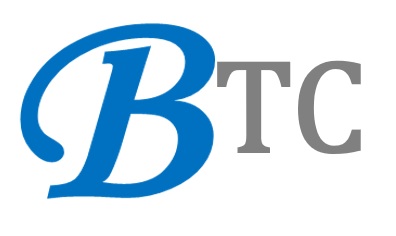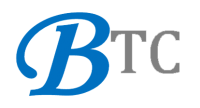
Organizations struggle to identify their next-gen leaders, and for good reasons. When you don’t know what the future will bring, how do you figure out who has — or can acquire — the right strengths to meet those challenges? Which high potentials will give you the best return on your development efforts?
Faced with these uncertainties, businesses tend to focus on what they do know: They look for people who’ve taken on more responsibility in their careers or have nailed their performance targets. In short, they look for future leaders by focusing on past track records. And this approach can work well if you’re filling a known role and candidates have had chances to demonstrate the required skills and characteristics.
But past performance doesn’t tell you who can do things they haven’t done before. It also doesn’t help identify high potentials earlier in their career. Your leadership pipeline could be missing out on other, potentially richer sources of talent — people who haven’t had equitable access to mentoring, sponsorship, development, and advancement opportunities.
To tackle this problem, we developed a model for predicting leadership potential that’s grounded not in achievements but in observable, measurable behaviors. Drawing on a database of more than 23,000 candidate assessments for roles at public and private companies, we conducted in-depth analyses of 1,500 individuals, from entry-level professionals to senior leaders.
We examined their behaviors and isolated three psychological markers that reliably predict individuals’ ability to grow and handle increased complexity in new roles:
Cognitive quotient (CQ): how they leverage their intellect
Drive quotient (DQ): what motivates them and how they apply their energy
Emotional quotient (EQ): how they interact with those around them
While these markers are rooted in intellect, motivations, and interpersonal style, they don’t provide raw measures of these qualities, as personality tests and other tools often try to do. Instead, they capture how people use these qualities on the job, and together, they give organizations a concrete, objective way to gauge leadership potential, regardless of candidates’ depth of experience.
Let’s look at telltale behaviors in each psychological area — both table stakes and higher-level differentiators that signal capacity for future leadership roles.
Cognitive Quotient (CQ)
Many organizations focus mainly on intellectual horsepower when considering their leadership bench. After all, it’s a valuable quality, and we have tools to gauge it: academic transcripts, psychometric tests, and case-based interviews designed to evaluate analytical acumen. We often assume people who do well by these measures are probably “bright enough” to learn whatever they’ll need to know to succeed in the future.
But these common measures can be steeped in bias. They favor candidates who attended elite schools, those who’ve already secured plum early-career positions, and those who know how to jump through the requisite hoops. They also favor book smarts over practical smarts and commercial instinct.
To measure CQ, you’ll want to search for the more advanced behaviors that distinguish people who use their intellect to solve for the right problems. Do they routinely step back from their tasks to see things from the perspective of their manager (or their manager’s manager)? When considering which path to take, do they try to look around corners to anticipate the unexpected? When making decisions, even small ones, do they ground their thinking in how they can create value for the business?
Drive Quotient (DQ)
When we talk about drive, we’re not just describing motivation to excel, a strong work ethic, and persistence. Although these qualities matter, they’re relatively common among aspiring leaders.
The differentiator here is how people apply their energy — not just to maximize their own performance but to develop and leverage the capabilities of others (a distinction we see overlooked in many models).
People with high DQ push past their comfort zones and attack new challenges with relish. They’re also resilient: When they experience a setback, they reset and reframe and try again. Most importantly, they continually strive to improve not just as individuals, but to amplify results at the organizational level.
Emotional Quotient (EQ)
Companies know they need leaders with emotional intelligence, but in our experience, they tend to focus on basics, like self-awareness, getting along with people, and being able to read the room. Again, these skills are necessary but not sufficient.
To find people with high EQ, the differentiators we identified in our research suggest that you should search for individuals who engage for impact — for instance, those who are intentional about channeling their insights to influence stakeholders and negotiate outcomes. In addition, look for those who are able and willing to deliver difficult messages with courage and empathy.
Testing the Model
Over the past five years, we’ve used this model extensively to validate and apply our findings. In one double-blind study looking only at the earlier phases of leaders’ careers, the three markers of CQ, DQ, and EQ accurately differentiated those who later made it to the C-suite from those who didn’t two times out of three. The model significantly outperforms typical success rates for hiring and promotion decisions, which tend to be a 50/50 roll of the dice.
In another study, conducted over several years, within one organization, we used our model to assess the potential of more than 1,800 candidates for key leadership and/or functional roles. Managers made independent decisions about hiring and subsequent performance; we didn’t share our ratings. In our analyses that followed, we found that the people we had rated highly on potential were more than three times as likely to be evaluated by their managers as top performers in their first year and even more likely to be top performers in their second year, third year, and even their fourth year. They were also less likely to be involuntarily terminated.
These results suggest that what we are measuring is not merely the acquisition of skills but a style of thinking and working that sets the stage for ongoing growth and success.
Using the Model to Develop Potential
To tap leadership potential earlier — and more effectively — organizations can build a few key steps into their talent processes.
Start by educating managers on what to look for when recruiting and screening early-career hires, conducting evaluations, managing performance, and selecting candidates for development opportunities. Explain that performance on its own is not a proxy for potential, and ensure managers know how to recognize CQ, DQ, and EQ in individuals who don’t have a track record or whose backgrounds don’t fit the same mold as previous generations of leaders.
Organizations can also develop “potential profiles” as part of their performance management and talent development processes. Managers can accelerate professional growth by assessing employees’ CQ, DQ, and EQ skills and providing coaching on how to develop and refine them.
To build the strategic muscle associated with CQ, we often recommend having people attend meetings with senior leaders to observe and gain a broader perspective on the business. Managers can also give employees assignments that require them to engage with other parts of the organization — through these experiences, they can discover how to connect dots across units or functions. Encouraging employees to participate in industry conferences and events will help them gain exposure to the issues and questions that are top of mind for leaders beyond their own organization.
DQ can be developed through stretch opportunities that test people in new ways. Try rotating aspiring leaders into different markets or areas of the business, for example, or giving them bigger teams to manage — and then see what they do to get themselves up to speed. Do they wait to be told which skills to sharpen, or do they proactively seek feedback on what they need to learn and how to go about it?
To help high potentials build their EQ, start with organizational culture. Spell out the “unwritten rules” for engaging with one another. Once they have a handle on those, task them with mapping their stakeholders, and make building these relationships an explicit development objective. You can also introduce them to tools and frameworks that will deepen their understanding of how they’re personally wired, what makes others tick, and how to speak to others’ needs.
Case Study: Developing a High-Potential Leader
A Fortune 500 company engaged us to help identify and develop their high-potential pool. Most of our work was with leaders two levels below the C-suite.
Maya* was three levels down and only included when a spot in our program unexpectedly opened up. She was an unknown to many of our client’s senior leaders, and those who did know her had a negative impression, telling us she was “too young,” “too eager to please,” and “lacked gravitas.”
However, when we did our initial assessment, we were impressed by how she approached complex problems, evaluating multiple scenarios rather than quickly locking in on a single answer, and factoring in the broader industry context and competitive dynamics. We rated her highly on CQ.
Maya distinguished herself on DQ as well. Her parents were immigrants working blue-collar jobs, so she chose the college that may have lacked a prestigious brand but offered her the most attractive financial package. She excelled there before joining our client, where she was soon on an accelerated path. What made her stand out, however, was how even in her earliest roles she sought out opportunities for stretch assignments. She also volunteered for and became a leader of the company’s women’s mentorship initiative.
EQ was Maya’s weakest area. The flip side of her drive to deliver results was that she didn’t invest time in building relationships. As a result, she struggled in situations where the facts and data weren’t enough to make her case and she had to use persuasion to advance her objectives. She also tended to work around conflicts rather than have tough conversations with colleagues.
We coached her on being more intentional about getting to know her stakeholders and managing how she “showed up” with them. We guided her on ways to tackle difficult issues head on and held her accountable for doing so. We also recommended a rotation to an assignment that would test her ability to work cross-functionally.
Over the course of the next 24 months, she jumped two levels to land in a high-visibility role where she is thriving. Her new boss describes her as a “rock star,” and she has jumped to the top of the list for consideration for C-suite feeder roles.
. . .
One final note: Many behaviors are readily coachable — for example, people can learn how to more effectively influence and persuade. Others may be harder to change, like thinking more conceptually or strategically. So when considering someone’s potential to succeed in a new leadership role, take into account how readily any missing behaviors can be learned and put into practice.
CQ, DQ, and EQ are each valuable in their own right. But together, these markers can help your organization identify and develop the next-generation leaders needed to navigate unknown challenges ahead. And they’ll allow you to tap a much larger, deeper, more diverse leadership pool than you realized you had.
This post is written by James Intagliata, Jennifer Sturman, and Stephen Kincaid.
Original post link: https://hbr.org/2022/05/how-to-spot-and-develop-high-potential-talent-in-your-organization

